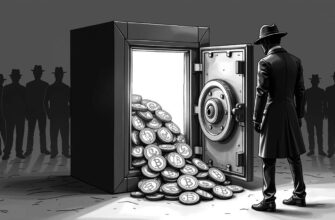Litecoin (LTC) has been on quite the ride lately. There’s been a noticeable uptick in activity from short-term holders (STHs), those folks who aren’t exactly in it for the long haul. These STHs are usually quick to react, selling off during price dips or volatility. And guess what? The balance of Litecoin held by these short-term players has jumped by 31% in just a month. Historically, this kind of surge often hints at increased market action and sometimes even precedes price spikes.
What’s interesting is that previous spikes like this one have typically occurred around market bottoms. So, it seems these STHs are loading up on Litecoin, perhaps anticipating a future upswing. This behavior isn’t unique to Litecoin; similar patterns can be observed across various cryptocurrencies.
Market Dynamics and Price Fluctuations
How does this affect the market? Well, as you might expect, there’s been a fair bit of movement. The recent surge led to an impressive 14% drop on Binance, which liquidated a ton of highly leveraged positions. Before that drop, Litecoin was relatively stable with some buy and sell signals scattered about.
But here’s the kicker: after that sharp decline, indicators like the Relative Strength Index (RSI) showed Litecoin was heavily sold into during that moment. The Commodity Channel Index (CCI) also took a nosedive, confirming that we hit some oversold conditions.
Now that things have calmed down post-liquidation, could we be looking at a more stable environment? Some might argue it’s bullish — less volatility could mean more sustainable growth as the market clears out all those speculative excesses.
Broader Trends and Implications for Crypto Betting Platforms
This behavior from short-term holders isn’t just confined to Litecoin; it’s part of a larger narrative in the crypto space. During bull markets, prices tend to hover above what’s called the Short-Term Holder Realized Price — essentially indicating these holders are sitting pretty on their profits. In bear markets? Not so much.
The recent activity in Litecoin mirrors what we see in other cryptos when interest peaks — inflows into spot markets and derivatives alike skyrocket as speculative traders look to capitalize on every little movement.
Speaking of speculation — let’s talk about crypto betting platforms for a second. You see, strategies like scalping or swing trading thrive on volatility and rapid price shifts. They can significantly impact decentralized betting platforms using cryptocurrencies for transactions.
Sure, increased liquidity can make things smoother for crypto betting sites but let’s not kid ourselves — there are risks involved too! Those platforms need solid risk management strategies if they want to survive the wild west that is crypto trading.
Historical Patterns Pointing Towards Potential Reversals
Now let’s dive into some technical analysis here because history tends to repeat itself in crypto land! Oversold conditions often lead to bullish reversals — just check your RSI readings!
Indicators like RSI or Stochastic Oscillator help traders identify these moments; an RSI below 30 usually screams “buy!” Chart patterns such as Double Bottoms or Inverse Head & Shoulders also signal potential reversals after prolonged downtrends.
Looking back at Litecoin’s history reveals something fascinating: similar oversold situations have previously led to explosive recoveries! If we take a cue from past events — it might just be time for LTC to spring back up like an elastic band that’s been fully retracted!
Summary
In summary: The recent surge in short-term holder activity suggests increased participation and possibly higher prices ahead for LTC. This aligns with broader trends seen across cryptocurrencies. Speculative strategies used during trading cycles influence decentralized betting platforms, highlighting necessity of effective risk management.
As always, keeping an eye out on historical patterns could provide valuable insights into future movements – especially if you’re involved within realm of crypto sports betting !








